10 Ways to Sound Like Neil Peart
By David A. Brensilver, Drum!, June 2016, transcribed by John Patuto
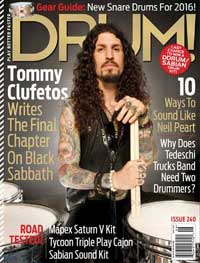
No serious fan was surprised when in early 2015 Rush announced that the R40 tour would "most likely be their last major tour of this magnitude." The reverse-chronological presentation of their music indeed told the story of an astonishing career. At the conclusion of the final show of the tour, at the Forum in Los Angeles, Neil Peart did something he'd never done before, joining bandmates Geddy Lee and Alex Lifeson downstage and waving, seemingly, to Rush fans everywhere. Peart joined Rush on Lee's 21st birthday, July 29, 1974, and helped write a story that is as magical as it is unlikely. Along the way, he became one of the world's most influential drummers. For many, his words and ideas, as conveyed through the lyrics and stories he's penned, are equally inspiring. And it's impossible to separate the two. He's a master storyteller, an artist who expresses himself beautifully in different mediums. To understand his approach to drumming, one needs first to understand his approach to creating a narrative and his relentless pursuit of excellence.
1. USE WHAT YOU WERE GIVEN
Like so many young people who've
felt disconnected from the cliques
and cool crowds of the kind of high-school
landscape he wrote about in
Subdivisions, Peart discovered in music
a ready vehicle for self-expression and
exploration. Behind a set of drums in his
bedroom in St. Catharines, Ontario, Canada,
he found escape, inspiration, and the
promise of possibility. His exuberant playing
on Rush's 1975 album Fly By Night
introduced him as an exceptionally talented
player with magnificent technical facility
and deep musical intelligence. While his
physical abilities and mental chops have
allowed him to execute the artistic vision
that he, bassist Lee, and guitarist Lifeson
share as individuals and bandmates, it's his
relentless desire to push and challenge
himself and a dedication to exacting
consistency that have given us, over the
course of more than 40 years, the yield of
that ambitious vision. Evidence of that
ambition can be found in all of Rush's
music, perhaps nowhere more obviously 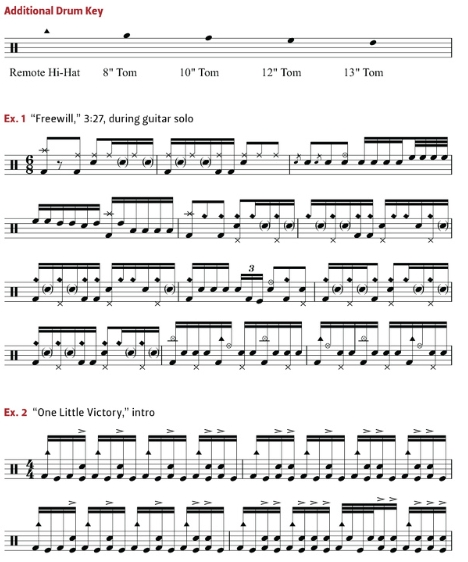 than in the solo section of "Freewill" (Ex.
1), from the band's 1980 Permanent Waves
album. Two decades later, following a
"forced" hiatus from music between 1997
and 2001, Peart retook control of the
vehicle that had allowed him to explore
and express so much, and, with the
triumphant introduction to "One Little
Victory" (Ex. 2), the opening track on
Rush's 2002 Vapor Trails album, he
captured anew the exuberance that he'd
brought to the band nearly 30 years earlier
and the determination to continue the story.
than in the solo section of "Freewill" (Ex.
1), from the band's 1980 Permanent Waves
album. Two decades later, following a
"forced" hiatus from music between 1997
and 2001, Peart retook control of the
vehicle that had allowed him to explore
and express so much, and, with the
triumphant introduction to "One Little
Victory" (Ex. 2), the opening track on
Rush's 2002 Vapor Trails album, he
captured anew the exuberance that he'd
brought to the band nearly 30 years earlier
and the determination to continue the story.
2. COMPOSE, ORCHESTRATE & DEVELOP
Each and every song in Rush's beloved and ever-influential catalog is a study in detail, and that has as much to do with Peart's approach to creating his parts as it does the complex music that Lee and Lifeson present him during the writing and arranging process. Never interested in playing the important but often subservient role of timekeeper, Peart, in lockstep with his like-minded bandmates, has always taken a more-is-more approach to songwriting.
As active as his playing is, the care he brings to each piece of music can be found in his development of the musical storyline. "Bravado" (Ex. 3), from 1991's Roll The Bones, is a study in the compositional approach he brings to his parts. Peart's refined development, treatment, and orchestration of the drum part give the song direction as it builds in intensity to a climax. Itself constantly developing, Peart's sophisticated musical language has always been familiar, if not inimitable. From his frequent incorporation of the hemiola, which he used to build tension coming out of the guitar solo in "Limelight" (Ex. 4), from the band's 1981 Moving Pictures album, to his natural comfort playing commandingly over mixed meters, like the music of the verse sections in "Freewill" (Ex. 5), Peart has used his musical intellect to construct thoughtful and dynamic compositional narratives. The language he's used to do that, rich in rudimentalstyle snare drumming, adventuresome fills that have made impressive air drummers of people around the world, and the familiar syncopated hi-hat accents and cymbal crashes that punctuate his parts - like those in "Tom Sawyer" (Ex. 6), from Moving Pictures, and "How It Is" (Ex. 7), from Vapor Trails - has been used to construct drum parts that will forever be revered.
3. CONSTRUCT & PRESENT ICONIC DRUM SOLOS
One percussive specialty that held audiences rapt over the course of four decades is the drum solo Peart performed during each Rush show. From tour to tour, and to an extent from show to show, his solo evolved to incorporate rhythmic ideas he'd been working on over extended periods of time or in the warmup ("Bubba- Gump") room before a show. From Rush's early tours in the 1970s through the band's R40 tour, certain elements of Peart's solos remained constant - themes on which variations were based and explored. He developed the story, as it were, without losing fundamental elements of the plot. As he diversified his instrumentation in the 1980s, embracing emerging technologies and incorporating into his setup new pieces of equipment and their vast spectra of sounds, Peart's solos evolved remarkably from his first recorded solo performance on Rush's 1976 live album All The World's A Stage. While fans looked forward to their favorite parts of his solo, from the punctuated, rudimental snare-drumming section to portions of his 1987 short marimba piece "Pieces Of Eight" and multimedia-rich big-band presentations, Peart, in the end, was telling a single, long story, one that culminated on the R40 tour, during which he let the solo unfold anew each night, improvising on a blueprint that began nearly four decades earlier.4. EMBRACE THE ROLE OF "PROFESSOR"
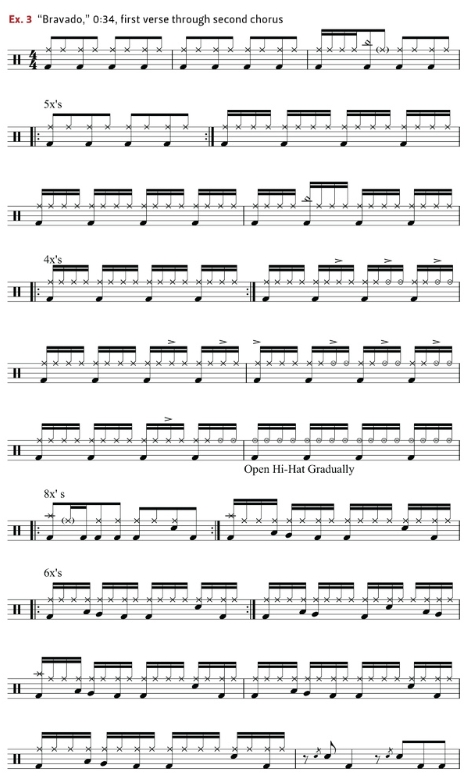
It's doubtful anyone knew in 1976, when Lee introduced Peart as "the professor on the drum kit" during the Toronto concerts that were recorded for All The World's A Stage, how apt the unofficial title would become. Learning to play his drum parts has been nothing less than a right of drumming passage over the years for countless percussionists. The enthusiasm he has for sharing his approach to his musical craft, and his gift for articulating his ideas and recounting his experiences, makes his instructional videos compelling on many levels. In producing the 1994 tribute album Burning For Buddy: A Tribute To The Music Of Buddy Rich and the 1997 follow-up volume, both of which were the subject of a 2006 documentary, Peart became a historian of sorts, sharing the drumming community's deep respect for the big-band legend and getting deep into Rich's head in preparing his own recorded performances. Beyond music and drumming, Peart has become a professor of "roadcraft," the art of travel the way he appreciates it. Less explicit lessons can be found between the lines of his lyrics and prose.
5. ASPIRE TO BE A LIFELONG STUDENT
If there's one trait Peart has shared with his many admirers over the years it's his unrelenting desire to be better, to learn and improve, to achieve excellence as identified by his own lofty standards and aspirations. Even as tours were underway, he'd listen to show tapes and critique his performances, determined to deliver a better one the next night. In a 1996 interview with Jam! Showbiz conducted just prior to the start of Rush's Test For Echo tour, Peart explained why he'd put off the recording of that album after the band toured in support of its previously released record. "Counterparts was when I was starting to get frustrated and feel rigid," he said. It was during the first Burning For Buddy sessions, immediately following the Counterparts tour, that Steve Smith turned Peart onto Freddie Gruber, under whose tutelage Peart reimagined the way he played, from his approach to timekeeping to the way he struck the drums and set up his kit. More recently, after Gruber passed away in 2011, Peart worked with Peter Erskine to further refine his approach. During the recording of Rush's 2007 album Snakes & Arrows, producer Nick Raskulinecz thought Peart could improve on the part he'd come up with for "The Way the Wind Blows" (Ex. 8). And there, on the spot, tossing planning, preparation, and formula aside, Peart came up with one of the most intense grooves he's ever recorded. And then, during the recording sessions for the band's 2012 album Clockwork Angels, Raskulinecz vocalized a drum fill he wanted Peart to include in the song "Caravan" (Ex. 9). The result is one that air drummers have probably practiced as much as Peart did.
6. POSSESS GREAT MENTAL & PHYSICAL STAMINA
For Peart, performing live with Rush was an athletic endeavor as much as a musical one, especially since the band stopped bringing opening acts on the road beginning with the Test For Echo tour. Playing extremely hard for three hours has required him to prepare carefully for each tour, getting into great physical shape to be able to endure the strain, punishment, and abuse that result from that kind of demanding exertion. It meant regular trips to the gym over the course of several months for various cardio workouts and weight training.
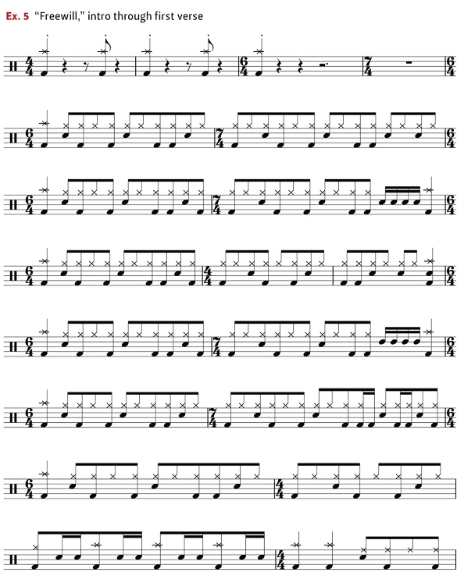
To get into playing shape, Peart spent a month working on his own, rehearsing songs that made the set list; conceiving, constructing, and developing his solo; and practicing the choreography of triggering myriad sampled sounds and effects. Practicing that choreography was no doubt as much a mental exercise as a physical one, as was remembering the countless details that make up Rush's incredibly complex music.
As Peart wrote in Roadshow: Landscape With Drums: A Concert Tour By Motorcycle (ECW Press, 2011), Lee once famously joked, "You're the only guy I know who rehearses to rehearse!" That perfectionism, that dedication to the craft, to himself, to his bandmates, and to Rush's loyal fans, pushed Peart to work hard offstage to be able to deliver the consistency he expects of himself. It's also the ambition that comes with taking on the mental and physical challenge that is playing with Rush.
7. WELCOME NEW IDEAS & INSPIRATIONS
While Peart has always been eager to indulge his musical influences, he's done so without an interest in co-opting anyone else's musical identity. That is, he never wanted to sound like anyone other than himself, even while exploring new territory. Growing up, he admired Keith Moon's drumming and certainly borrowed certain ideas, like continuing a fill across a bar line and adding punctuation midway or beyond the downbeat. In the 1980s, he incorporated elements of reggae and new wave that he heard on albums by The Police and other groups, and quickly embraced the electronic drums and sampling technologies that were arriving in the marketplace.
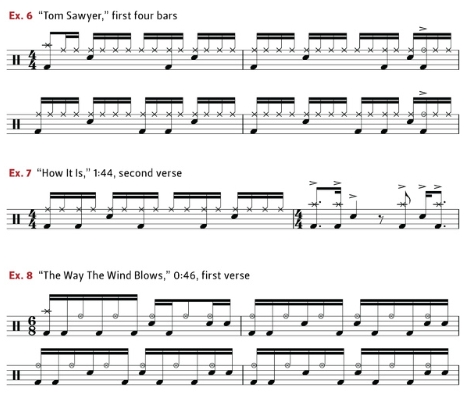
The minimal groove he brought to "Vital Signs" (Ex. 10), from Moving Pictures, celebrates those musical influences without obscuring the storyteller's own voice. Similarly, the funky part he played on "The Weapon" (Ex. 11), which Lee and a friend had generated with a drum machine while making Rush's 1982 Signals album, celebrated the technology that has played an enabling role in Rush's sonic evolution. Regarding "The Weapon," it's worth noting that, at the time, Peart playfully challenged the notion of the part being a celebration of technology, asking rhetorically, in the Signals tour book: "I'm supposed to learn how to play that?" Not too many years later, when Peart's experiences bicycling across West Africa and traveling elsewhere sparked a fascination with the drumming traditions of other places, he brought those interests and sounds to Rush's music. In "Heresy" (Ex. 12), from Roll The Bones, he captured the distant rhythms he'd heard in 1989, on a starlit night in Togo. Through the decades, Peart's exploration of different musical languages has infused Rush's music with sincere nods to different styles, traditions, and sounds. As an artist, he's always sought to broaden his musical vocabulary, often eschewing traditional drum-set applications to embrace the unconventional.
8. FOLLOW YOUR INTELLECTUAL CURIOSITIES
As Rush toured relentlessly, Peart found road life increasingly tedious and confining. He first found escape from that "vortex," as he's called it, in literature, returning to the love of books that he'd developed at an earlier age. An escape into the far-off fictional and real places described by authors familiar and littleknown fired his desire to see those places himself, to experience the world in a way that can't be achieved from the cabin of a tour bus or plane. To reach out and touch the world, instead of contemplating it through windows, he started carrying a bicycle on the bus, exploring the streets and downtowns of tour-stop towns and interacting with locals as a stranger, completely removed from the "vortex" and totally out of context.
Eventually, he began riding from show to show, if distances allowed, or at very least got dropped off 100 miles from the arena, to complete a "century" ride on his way to work. His enthusiasm for seeing the world up close was also the impetus for his aforementioned bicycle trip through West Africa. Eventually, Peart graduated to a motorcycle, and, beginning with the band's 1996-97 Test For Echo tour, he started touring by motorcycle, covering tens of thousands of miles per tour on the more scenic byways (shunpiking, to use his word) of wherever the band was traveling and creating detours to gather National Park Passport Stamps.
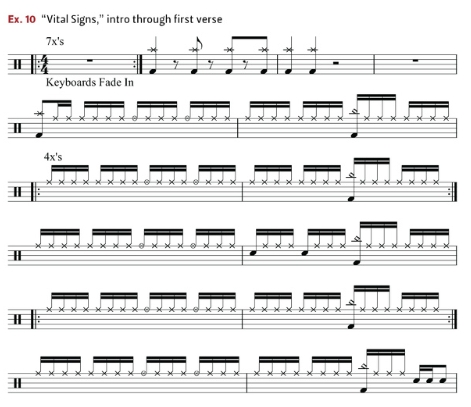
Whether on the road and using that opportunity to embark on some serious adventure travel or while exploring the natural beauty that surrounds his adopted home in southern California or retracing crosscountryski and snowshoe paths around his cabin on a lake in the Laurentian Mountains of Quebec, Peart has never been one to sit still. Nor has he been one to leave ambition behind when he's not making music. And the yield of his intellectual restlessness has informed all of his artistic pursuits.
9. WEAR DIFFERENT HATS
As Rush's lyricist since he joined the band in 1974, Peart has helped connect countless people with the band's music, with one another, with the human condition, and with the wider world. His words speak to people and forever will. Peart's lyrics are born of his own imagination and the inspiration he finds in the literary works of others. They are the product of observation and empathy, of reflection and introspection. They are music in themselves, artfully crafted lines and turns of phrase that reach out, through Lee's vocal delivery, into the hearts and minds of fans everywhere. After reading Peart's lyrics while listening to each new Rush album, diehard fans have pored over the liner notes Peart wrote, looking for the inside jokes they'd only come to understand as Rush's story unfolded further. And the band's tour books offered even more, each one featuring a story, by the unfailingly entertaining Professor, of how that album came to be. Peart also shared his own stories in a growing collection of books and on his website.
10. HAVE AN EYE FOR AESTHETICS
With each new Rush album has come a new aesthetic, and it's been Peart who's worked with artist Hugh Syme to present, visually, each collection of songs. And as each album and tour have featured a new thematic visual presentation, so, too, have the drum sets Peart has played over the years. His extensive setups have been immediately identifiable since the release of All The World's A Stage. From the battery of orchestral percussion instruments he traveled with back then (before those instruments could be replaced with electronic equipment) to the "Starman" logo from 2112 that long graced his bass drumheads and the artwork that followed - Peart's set and setup have always been familiar.
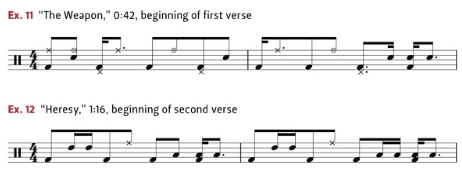
His rotating drum riser, which allowed him to face the audience while playing the electronic kit that continued the semicircular arrangement of the acoustic one and wrapped around behind him, was a functional element of his live setup and one whose use thrilled audiences. From the 1970s era Slingerland kit affectionately dubbed "Chromey" by fans to the R40 kit, whose paint job, an update of the R30 design, was a nod to Keith Moon's "Pictures Of Lily"?themed kit, each of Peart's touring kits was as much a vehicle for creative expression as a visual element of Rush's unfolding story. On the R40 tour, he traveled with two: a modern kit made by Drum Workshop from a 1,500-year-old piece of Romanian oak, and a "Chromey" replica.
Whether behind the kit, wearing his familiar, personalized kufi to keep the sweat out of his eyes, and Tshirts (and even special drumming shoes) emblazoned with albumart themed graphics, or offstage, working behind the scenes on the aesthetic concept for each album, Peart has told Rush's story, adding visual accompaniment to the narratives presented through drumming and the written word. If that story has been told in full, it's a remarkable one that will be appreciated as long as music is part of our culture.